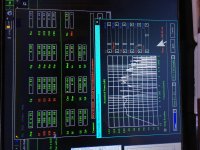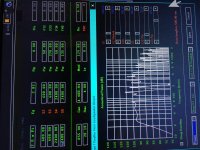I happened to see and hear Forsman's take on Paraflex at a DIY gathering last Saturday and I liked them so much that I'm now curious enough to see if the principle can surpass my sealed boxed subs and sealed boxed bass based on AE's TD15H.
I have now on each side two 315 liters sealed box subs with one TD15H in each driven by separate X-SLAPS but only one DAC channel.
On each side there is also a 190 liters sealed box bass with one TD15H also driven by a separate X-SLAPS and one DAC channel.
I very much would like to use the TD15Hs in this new setup.
I realize that the desired frequency range 15 to 280 Hz cannot be done with just one Paraflex.
But perhaps one sub with 15 to 100 Hz, perhaps comprising dual drivers (serial, parallel or isobaric).
The range above 100 Hz can perhaps be done with a higher tuned single driver Paraflex.
I am a noob when it comes to HR, but am I really barking up the wrong tree here?
Is the TD15H too soft even for Paraflex?
TD15H-8ohm
Fs: 21Hz
Qms: 4.23
Vas: 467 L
Cms: .45 mm/N
Mms: 129 g
Rms: 4 kg/S
Xmax: 14 mm(peak)
Xmech: 20 mm(peak)
Sd: 855 sqcm
Vd: 2.4L (p-p)
Qes: .27
Re: 6.5 ohm
Le: .3 mH
Z: 8 ohm
Bl: 20.1 T/m
Pe: 500W (cont.)
Qts: .26
1WSPL: 94 dB
2.83V: 94.84 dB
I have now on each side two 315 liters sealed box subs with one TD15H in each driven by separate X-SLAPS but only one DAC channel.
On each side there is also a 190 liters sealed box bass with one TD15H also driven by a separate X-SLAPS and one DAC channel.
I very much would like to use the TD15Hs in this new setup.
I realize that the desired frequency range 15 to 280 Hz cannot be done with just one Paraflex.
But perhaps one sub with 15 to 100 Hz, perhaps comprising dual drivers (serial, parallel or isobaric).
The range above 100 Hz can perhaps be done with a higher tuned single driver Paraflex.
I am a noob when it comes to HR, but am I really barking up the wrong tree here?
Is the TD15H too soft even for Paraflex?
TD15H-8ohm
Fs: 21Hz
Qms: 4.23
Vas: 467 L
Cms: .45 mm/N
Mms: 129 g
Rms: 4 kg/S
Xmax: 14 mm(peak)
Xmech: 20 mm(peak)
Sd: 855 sqcm
Vd: 2.4L (p-p)
Qes: .27
Re: 6.5 ohm
Le: .3 mH
Z: 8 ohm
Bl: 20.1 T/m
Pe: 500W (cont.)
Qts: .26
1WSPL: 94 dB
2.83V: 94.84 dB
Paraflex goes very loud, but i would not call it hifi sounding. There is too much distortion going on. It's very fit for p.a. purpose, but not for hifi i think.
Well, I don't want an increase in the distortion levels compaired to what I have now, that's for sure.
I will try to measure the existing loudspeakers in the near-field using some kind of diy anechoic box.
I will try to measure the existing loudspeakers in the near-field using some kind of diy anechoic box.
Bigger by a factor of?Too soft as in a high Vas? This just means it will be big.
Personally, I am not convinced that such a general claim is fair.Paraflex goes very loud, but i would not call it hifi sounding. There is too much distortion going on. It's very fit for p.a. purpose, but not for hifi i think.
I have no reason not to believe that many of the builders of Paraflex speakers are striving for high SPL numbers rather than fidelity. The principle for the speaker as such I don't think is worse than any other principle. the Quality of sound is probably more dependent of the implementation of the concept. A paraflex is in essence (as far as I understand it) a 6:th order parallel bandpass box. The ROAR is a serial bandpass box. Both are utilises quarter wave resonances to produce sound but can also utilise different horn flares if one wishes.
So, again, I think the quality of the sound has more with the implementation than the principle as such. Please educate me if you think I’m wrong.
Kind regards
/Forsman
I totally agree. Sealed and BR's do not produce low distortion bass like BP's. If a driver moves, it distorts. Drivers move less in a BP than a Sealed or BR for a given voltage.
Solhaga, please do not quote the post directly before yours in its entirety.
Thank you. Quotes removed.
Thank you. Quotes removed.
Measured distortion is actually quite low in a properly designed Paraflex .... USRFobiwan ("Plippie Plop" on Facebook) has proven this time and time again with his measurements ......
Group Delay is also tame and well behaved in a properly designed Paraflex (which is also something else people have made faulty assumptions about) ...... Moral of the story is that it is best not to assume anything😛
Group Delay is also tame and well behaved in a properly designed Paraflex (which is also something else people have made faulty assumptions about) ...... Moral of the story is that it is best not to assume anything😛
Agree! Isen´t that the filosophy behind most innovations and development work?Moral of the story is that it is best not to assume anything 😛
FWIW I ran a simulation with your drivers Solhaga. This is absolutely not final suggestion for a build, only a Q&D try to get a grasp of the drivers capabilities.
As we have suspected the soft suspension, which aids in getting the fs down to 21 (together with a rather high mms) also means that VAS is large which in turn will require a large box.
What you see below requires an internal volume just shy of a full cubic meter.
For domestic use I think it can provide enough SPL thanks to its great X-max.
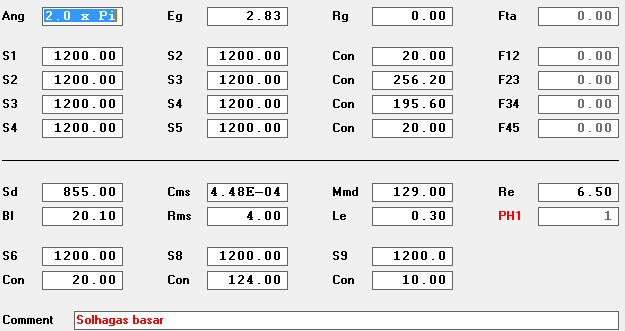
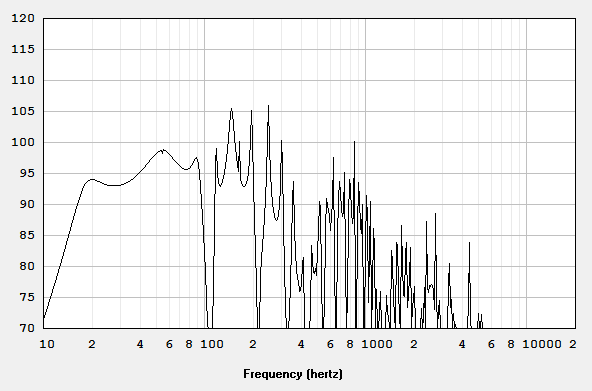
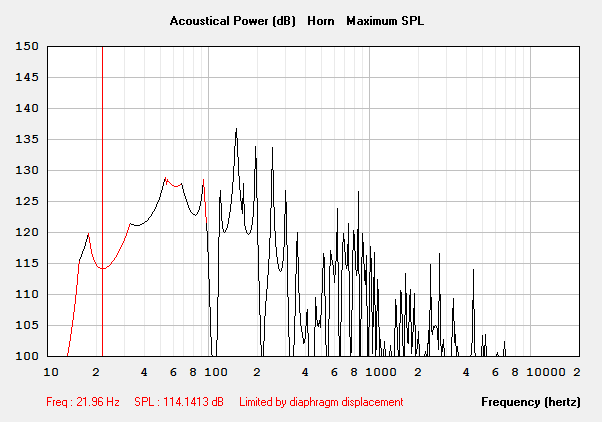
I wonder what would happen if one tries an isobaric configuration...

Thanks Forsman 
Well, that went as suspected then.
A little bit on the large side for me on many levels.
I mean, there are still many uncertainties before I dare to start the build
and then there's the actual build and then the result and further iterations and...
So I have to back on this one; I stick with my sloppy TD15Hs in my silly sealed boxes.
Then I might have some time to actually listen to some music.
Case closed.
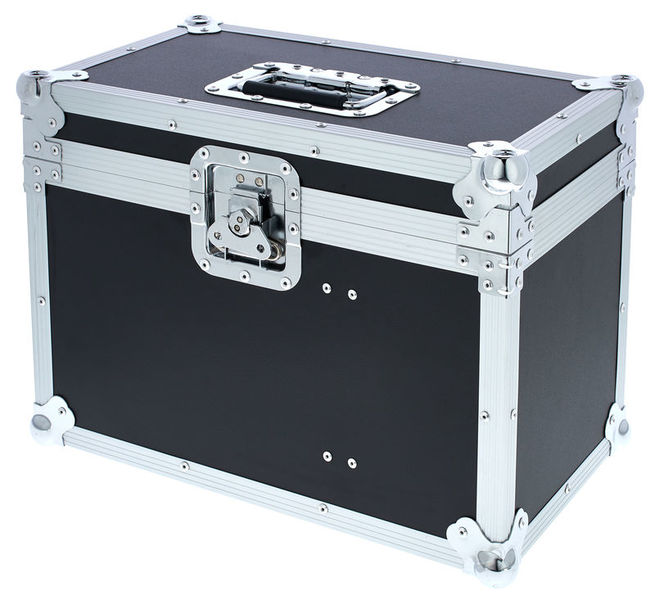

Well, that went as suspected then.
A little bit on the large side for me on many levels.
I mean, there are still many uncertainties before I dare to start the build
and then there's the actual build and then the result and further iterations and...
So I have to back on this one; I stick with my sloppy TD15Hs in my silly sealed boxes.
Then I might have some time to actually listen to some music.
Case closed.

I don't really agree. I don't think sealed boxes are silly and I think TH15H is a exceptional driver in many ways, also with great build quality. And personally I think sealed boxes with some careful EQ in the bottom end can be a very sensible way to go. Especially when we are talking about HIFI and not PA.Thanks ForsmanI stick with my sloppy TD15Hs in my silly sealed boxes.
I was thinking about bass reproduction in your room. As you're SALSA are that tall I assume it has line characteristics which suggests the volume might only drop 3 db per doubling of distance. If your have a dedicated sweet spot it might not matter but if you move around when listening maybe some sort of bass array might be interesting. I think I know you have experimented with bass arrays before. However, the concept och the Catacombs are really cool - just as food for thought. However, with high VAS they would be huge them too. 😎
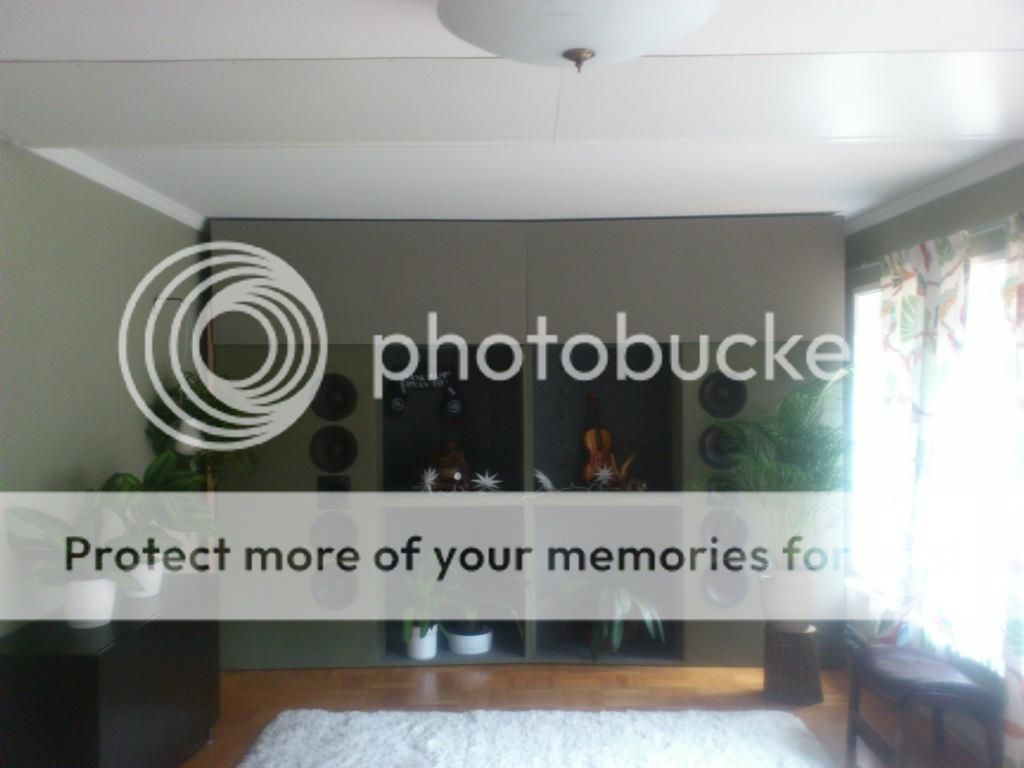
Last edited:
Yes, it'll be back to the bass arrays:
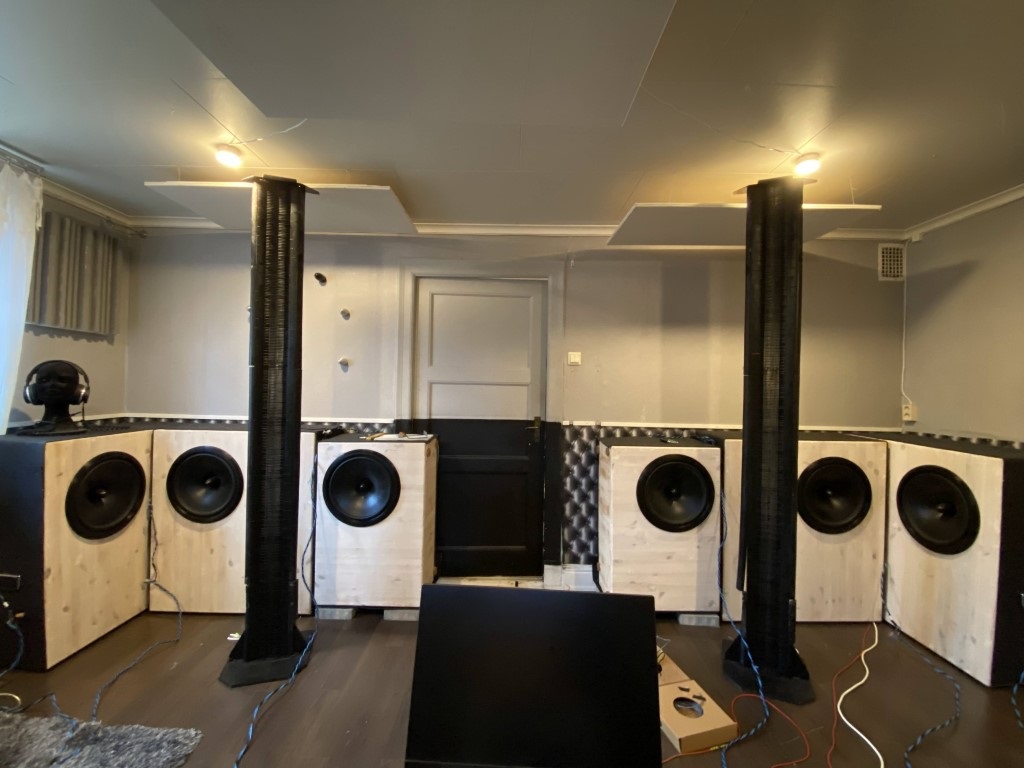
But I will measure them thoroughly in a near anechoic way and then possibly apply some EQ.
Luckily, I now know how to do that using rePhase and then importing the resulting FIR wav files into Roon's DSP.

But I will measure them thoroughly in a near anechoic way and then possibly apply some EQ.
Luckily, I now know how to do that using rePhase and then importing the resulting FIR wav files into Roon's DSP.
I wonder what would happen if one tries an isobaric configuration
I thought the same thing.
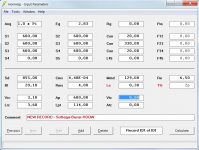
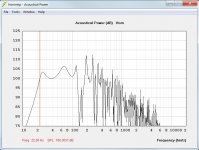
This is what I came up with. It is my way to simulate high order parallel quarter wave bandpass.
At 300 liter system volume and some enclosure walls to that, we are probably near 400 liter per box. And I can´t get the same nice wide bandwidth.
But then there is the whole discussion about parallel vs serial bandpass designs.
I prefer the serial version due to the positive feedback increasing the virtual Bl of the driver throughout the very important midbass. It does tend to sound more tactile, physical and brutal, but this is not always a good thing indoors. With high Bl, high power drivers it does become rather overwhelming. Here it might be a advantage to compensate for the somewhat mild characteristics of the drivers in question.
The TD15Hs are very nice drivers, but they are not optimized for high order QW enclosures (compare for example with B&C 18IPAL).
Thanks for the effort, Circlomanen.
Given the AE drivers though, I think these configurations are a dead end.
I think that I got carried away...
Given the AE drivers though, I think these configurations are a dead end.
I think that I got carried away...
625 liter ROAR …. Well even they’re all coming out too big for your wants/needs, it’s still a really nice driver. And your room in the picture is ridiculously cool! so cool
Attachments
Last edited:
It does tend to sound more tactile, physical and brutal, but this is not always a good thing indoors.
— I think you misspelled ‘it’s a monster and side affects might include minor concussions !!!’😀😀
Always a fan🙂
— I think you misspelled ‘it’s a monster and side affects might include minor concussions !!!’😀😀
Always a fan🙂
- Home
- Loudspeakers
- Subwoofers
- Replacing sealed box subs and bass with Paraflex speakers?
